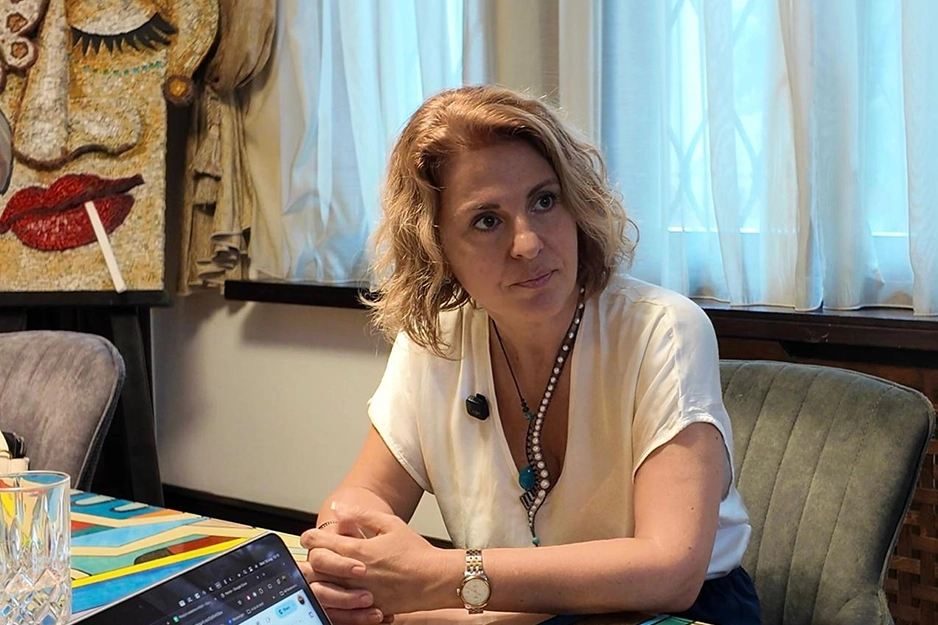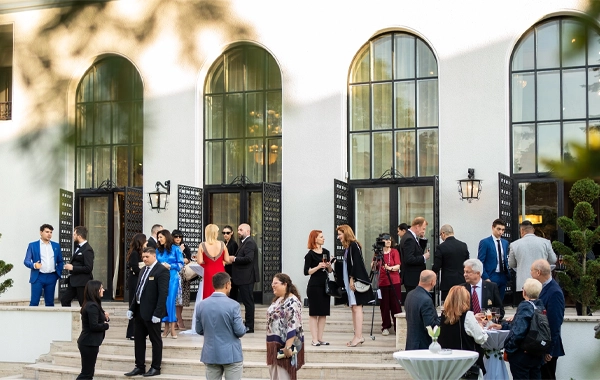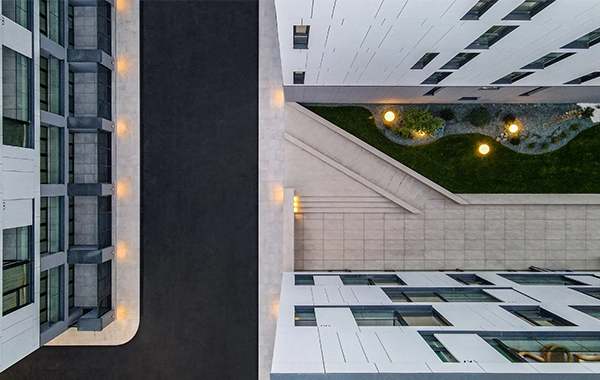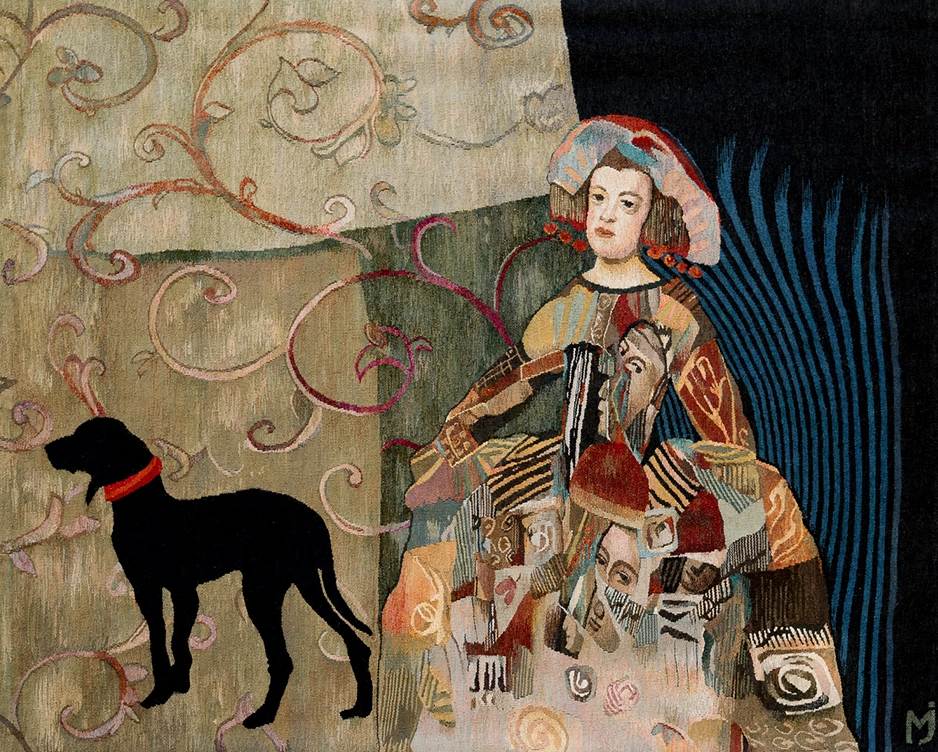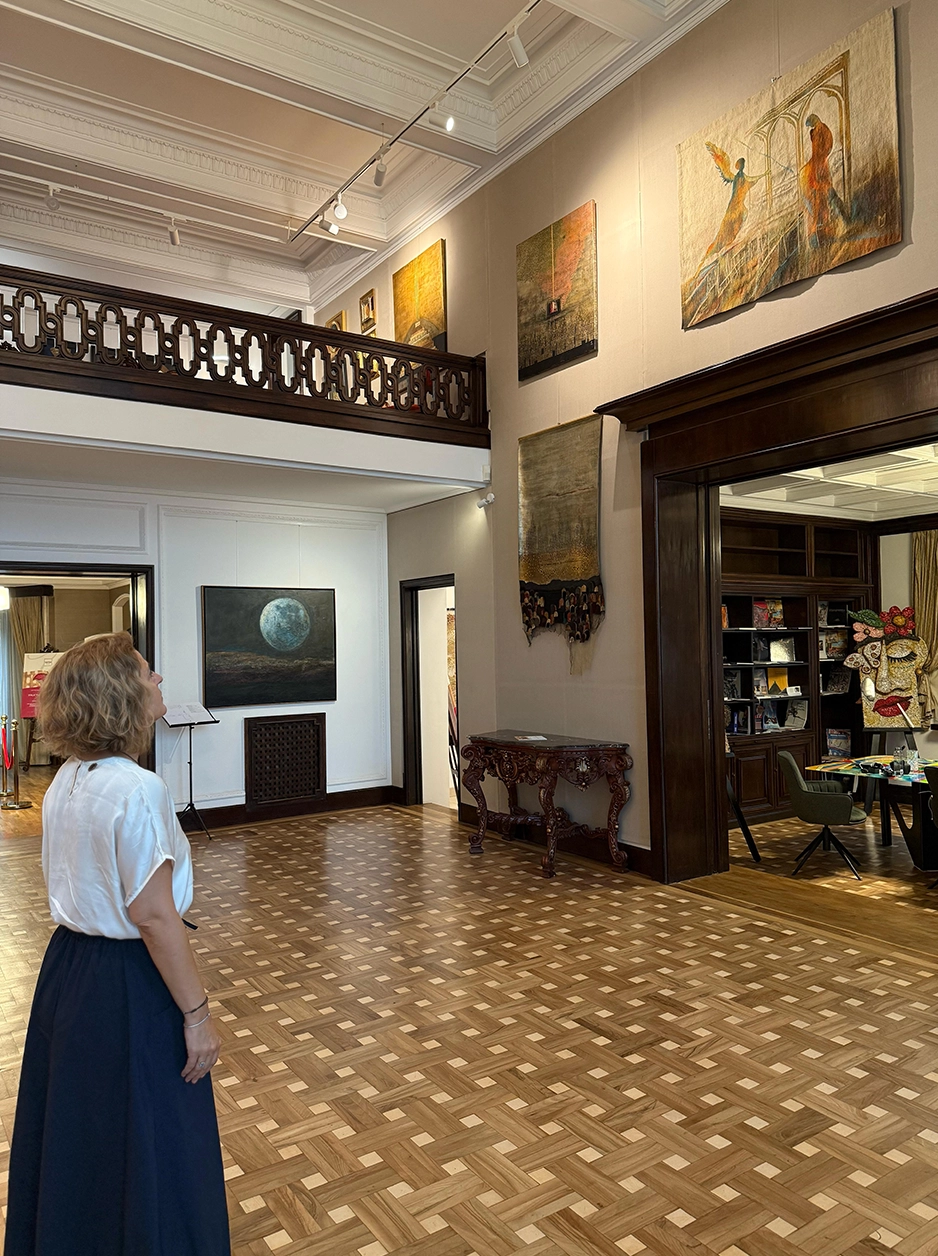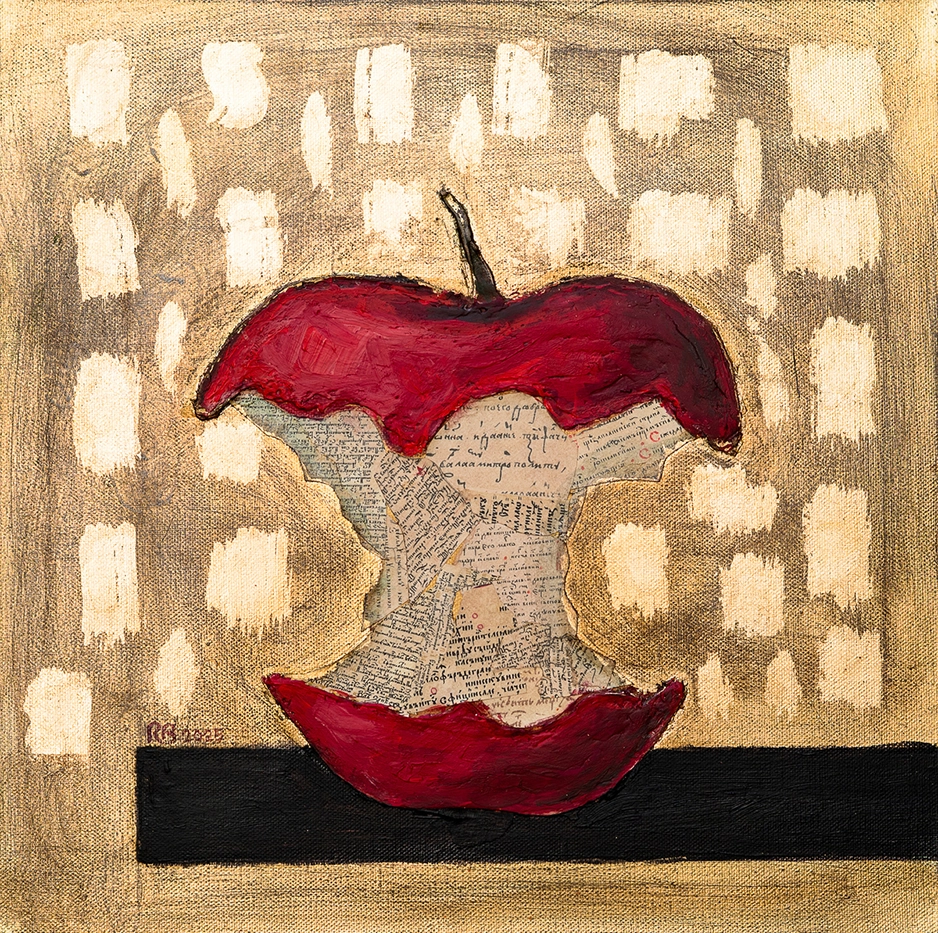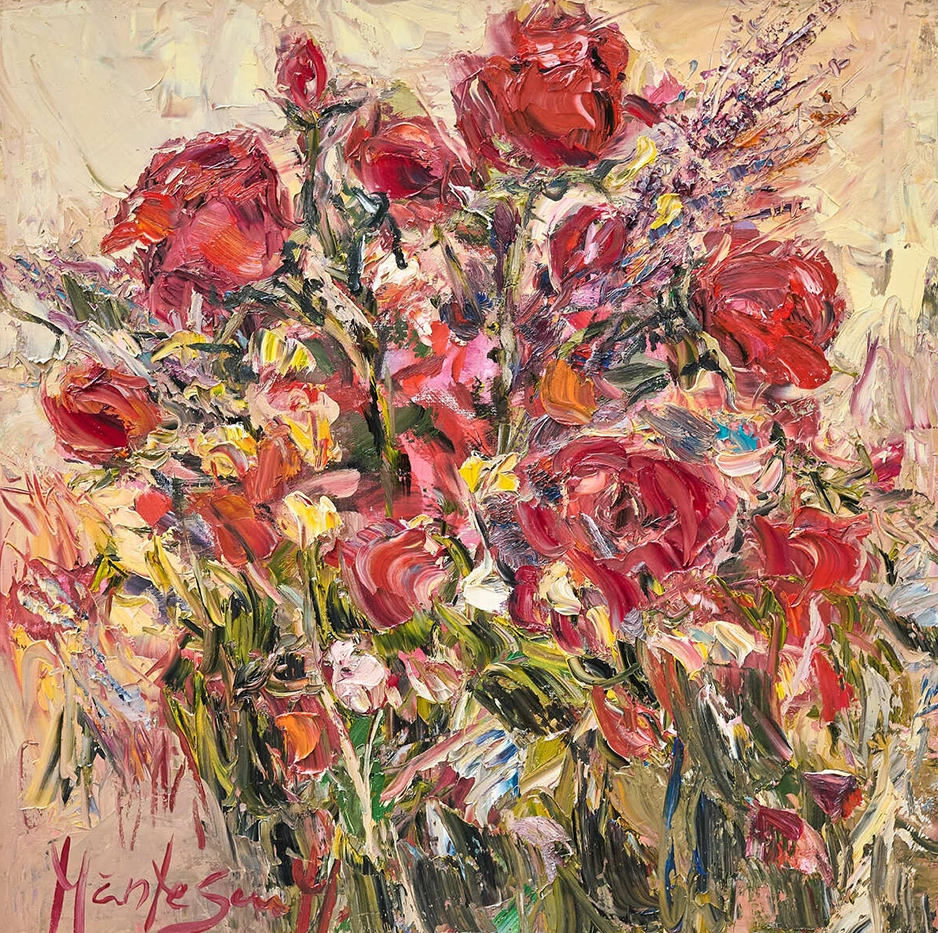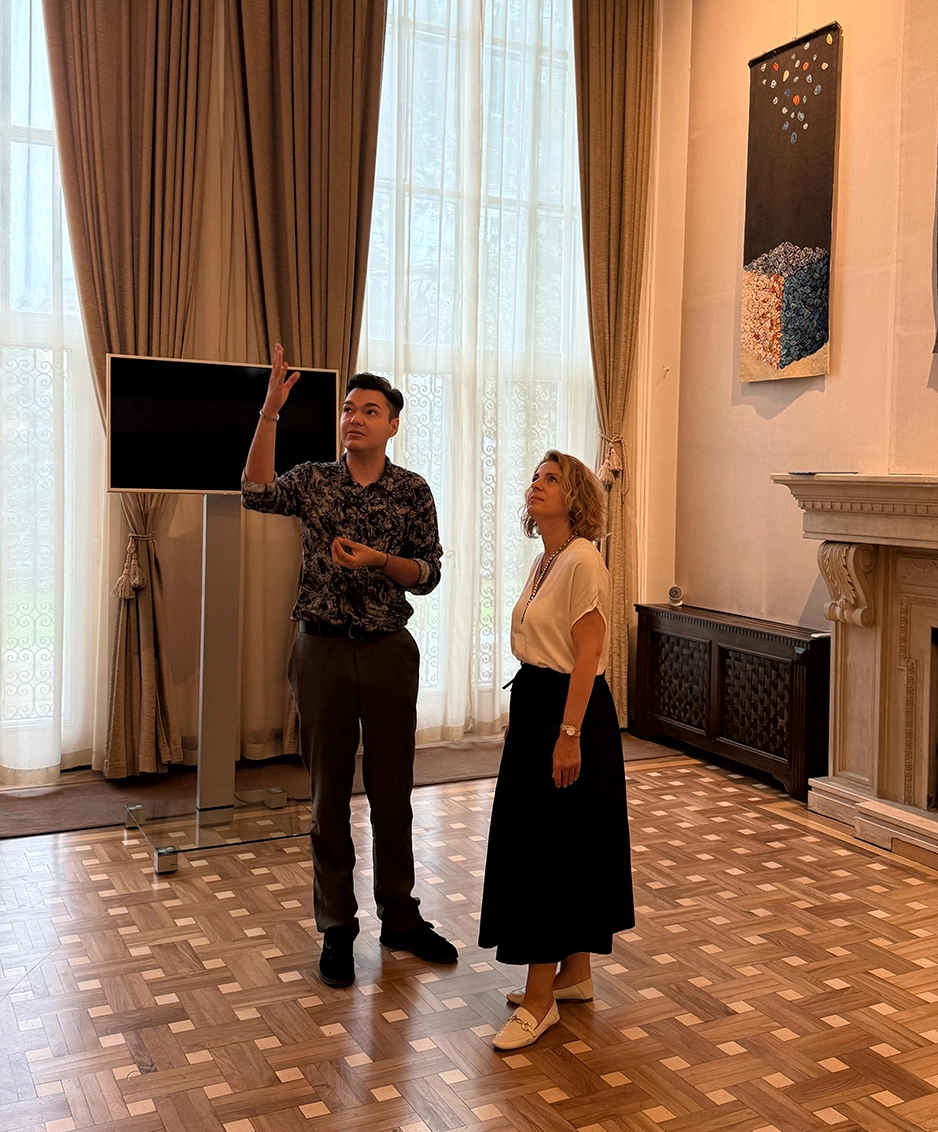WIN Gallery: Is there a particular style that attracts you more? Figurative, maybe, or abstract?
Aida Ivan: Not necessarily. I don’t have extensive education [in the field], I’m not like you who know all the details. For me, it has to awaken something in my soul. If it awakens a positive emotion – because it can awaken the opposite as well – but if it awakens a positive emotion, for me that is [the most important], just like it was when I saw the painting I bought. There were several from the same series. I looked at those too. They were all beautiful, but there was something about this one. [...]. If I ask myself rationally, I don’t know why it reminded me, probably, of the red roses I used to care for with my grandmother, who had this passion for tending roses. But I don’t even think that matters. I like every morning, when I wake up at five, five-thirty, to sit in front of it, where I have my study armchair, where I read and meditate. [...]. And that’s all that matters to me.
WIN Gallery: And does this painting help you in meditation as well? Does it have an impact?
Aida Ivan: Look, I hadn’t thought about it, that’s a good question. I don’t know if it helps me meditate, because I used to meditate even before I had it in that place, but it certainly changes my state, meaning I start my day with a smile on my face.
WIN Gallery: Do you have a favorite Romanian artist?
Aida Ivan: Piliuță was a family friend of my godparents. And when my godmother died, [...] she left me everything, including her Piliuță collection, which I later gave to his wife, a few years ago. I liked Piliuță, all his paintings had something... And then there was a woman painter I can’t identify, a painter from Brașov, Emilie, I know she was a political dissident, but I don’t recall her surname. I also bought, at the Aro Hotel where she used to exhibit, an entire exhibition. I still have her paintings at home. They’re very beautiful and, again, they give me a pleasant feeling. [...]. I really like antique shops, for example, and I have all kinds of icons I bought from there, with which I resonated. Or some painting, maybe no name, by someone who is not a celebrity, but if it spoke to me, that was enough. Meaning if the soul spoke, that was enough.
WIN Gallery: And internationally, is there something that attracts you? An artist, a movement, or a gallery?
Aida Ivan: I can say what doesn’t attract me. I’m not drawn to trickery [because] I go with my heart towards the classics, somehow, because it’s clear that I like movements from the classical area. And I’m not very drawn to abstract works.
WIN Gallery: In an artwork we can find message, emotion, technique, and many other elements. Is there an order of priorities when you look at an artwork?
Aida Ivan: Symbols. I like to look for symbols just like I like to look for them in language when I talk to someone in psychotherapy or in dreams. Symbols, that’s what I look for. You noticed this too when you asked me what I see when I came [to the gallery]. That’s where my eye goes. Of course, it may also be professional bias.
WIN Gallery: What moment has stayed with you most from your experience with art?
Aida Ivan: It’s complicated. Many come to mind, like this... But look, I would say when I received Piliuță’s collection as a gift. Among all of them, there was a painting – it was called “The Old Woman”, apparently it was his mother. That painting stayed in my bedroom for over 20 years. That painting, I remember, when I first saw it and when I put it on the wall, [a very special connection formed]... And when I gave it away, it was the only one I parted with with difficulty. With hardship. A much deeper connection than with the others from Piliuță’s collection. My mother wanted to keep it for herself and she gave it to me because she saw I was so attached to it. And when I gave it away, yes, I regretted it. Still, I gave it away with love, because I thought that’s how it should be [...] I would love to get that painting back because [the woman in the frame] looks like my grandmother. At that time, my grandmother was doing very well, and now she is gone – and I think that’s also a reason.
WIN Gallery: Are you more attracted to openings where you can interact with other art lovers, or private visits to a gallery?
Aida Ivan: Private visits. [...] Maybe because my mind is probably quite tired of people and of talking, and then I enjoy the quiet. And I like to go to a gallery, for example outside [visiting] hours. When no one is there, when it’s just me and one person – look, with you – and I like it that way, to go from work to work and have my own time. I don’t want anyone else [unknown] next to me.
WIN Gallery: Do you visit galleries often?
Aida Ivan: Not as often as I would like. Abroad, when I get there, many times I have more time, usually. But here, besides WIN Gallery, which is already a favorite place,[...] I like to go to memorial houses, because I really like to get to know the life of the person. To see their work, but somehow connected to their life. Also, I like to see their piano or, look, that lamp. I don’t know why, [maybe because] it was theirs. It seems to me that it’s full of the person’s energy. That’s why I really like memorial houses. I grew up in Câmpina, where we had Grigorescu, Hașdeu, so I spent my childhood in those courtyards and places. Especially since my uncle was a Romanian language teacher and also somewhat of a local literature expert, and he used to go with groups, presenting... like a guide. And regarding houses, you really get to know [the people who lived there] personally, because you realize how the objects were arranged, what kind of objects they liked. In addition, my imagination always runs wild and I imagine that person in their own house. That’s also my problem with houses. I have an attraction I can’t control for abandoned and beautiful houses. But not necessarily beautiful as in big mansions, [I mean] any house that has a personality and that I see abandoned. I stand there and see it alive, I imagine who the owners were, how they arranged their things, if they had children or not. So, an entire world unfolds only in my head, of course.
